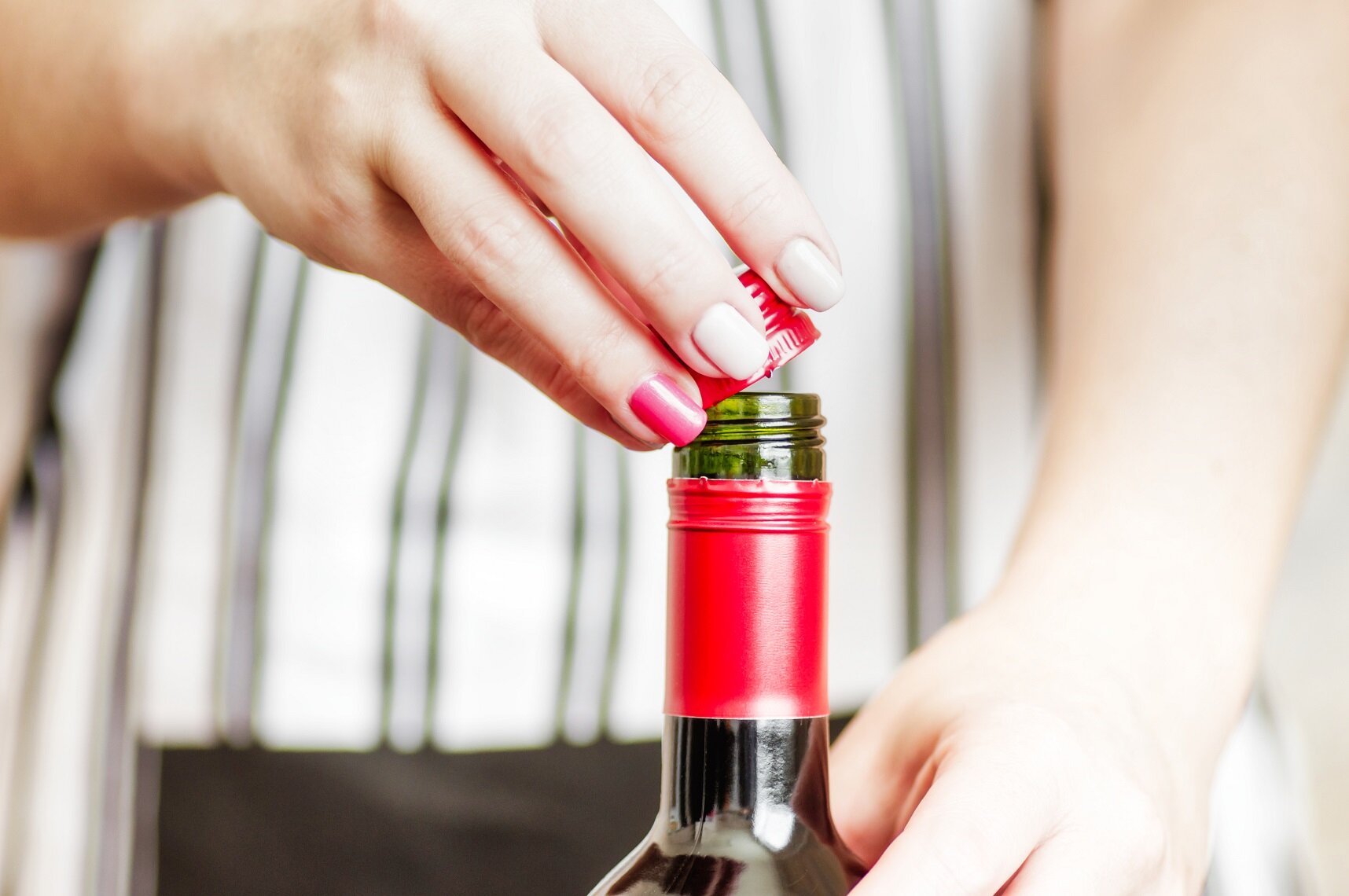By Andrew Waterhouse - Professor of Enology, University of California, Davis
Most foods are best as fresh as possible. I remember picking peaches at my grandfather’s ranch in Northern California and eating them on the spot. What a taste! But the exceptions to this rule are the many wines that actually need some aging to taste their best. Winemakers know this, and work to control the aging process including decisions they make about how to bottle up their product.
Put a cork in it? Or maybe you prefer a screwcap? - Image Credit: Delpixel via Shutterstock - HDR tune by Universal-Sci
Aging and oxygen
One aspect of aging has to do with the reaction of fruit acids with the alcohol. This process reduces sourness in the wine, but it’s really only important for very tart wines, the ones coming from cold climates.
The complex oxidation process is the second aspect of aging. When oxygen interacts with a wine, it produces many changes – ultimately yielding an oxidized wine that has a nutty aroma. This is a desired taste for sherry styles, but quickly compromises the aromas in fresh white wines.
However the oxidation process provides benefits along the way to that unwanted endpoint. Many wines develop undesirable aromas under anaerobic – no oxygen – conditions; a small amount of oxygen will eliminate those trace thiol compounds responsible for the aroma of rotten eggs or burnt rubbber. Oxidation products also react with the red anthocyanin molecules from the grapes to create stable pigments in red wine.
The way a bottle is sealed will directly affect how much oxygen passes into the wine each year. That will directly affect the aging trajectory and determine when that wine will be at its “best.”
Stick a cork in it?
Glass is a hermetic material, meaning zero oxygen can pass through it. But all wine bottle closures admit at least a smidgen of oxygen. The actual amount is the key to a closure’s performance. A typical cork will let in about one milligram of oxygen per year. This sounds like a tiny bit, but after two or three years, the cumulative amount can be enough to break down the sulfites that winemakers add to protect the wine from oxidation.
Bark from this typ of tree is stripped periodically to make corks - Image Credit: Suranyi Mate via Shutterstock - HDR tune by Universal-Sci
There are three major closure options available: natural cork and technical cork, its low budget brother made of cork particles, the screw cap and synthetic corks. Natural cork closures appeared about 250 years ago, displacing the oiled rags and wooden plugs that had previously been used to seal bottles. It created the possibility of aging wine. Until 20 years ago natural corks were pretty much the only option for quality wine. It’s produced from the bark of the tree, and harvested every seven years throughout the life of a cork oak tree, Quercus suber. The cork cylinder is cut from the outside to the inside of the bark.
A small fraction of corks, 1-2% today, end up tainting the wine with a moldy smelling substance, trichloroanisole. This TCA is created via a series of chemical reactions in the bottle: chlorine from the environment reacts with the natural lignin molecules in the woody cork to make trichlorophenol, which is in turn methylated by mold. TCA has one of the most potent aromas in the world – some people can smell as little as 2 parts per trillion in wine. So, in every eight cases of wine, one or two bottles will smell like wet cardboard or simply not taste their best. This is why restaurants let you taste the wine before pouring – to let you judge if the wine is tainted. A 1% failure rate seems high in today’s world.
Looks like a cork, but these don't grow on trees - Image Credit: bofotolux via Shutterstock - HDR tune by Universal-Sci
Plastic fantastic?
Synthetic corks are made from polyethylene, the same stuff as milk bottles and plastic pipes. After years of research and development, these corks now perform nearly the same as the natural version with three exceptions: they have no taint, they let in a bit more oxygen and they are very consistent in oxygen transmission.
Their consistency is a major selling point to winemakers because the wine will have a predictable taste at various points in time. In fact, winemakers can tweak the oxidation rate of their wine by choosing from a range of synthetic corks with different rates of known oxygen transmission.
Easy off, but tricky to put on - Image Credit: Photosiber via Shutterstock - HDR tune by Universal-Sci
Screwcaps are actually two parts: the metal cap and the liner inside the top of the cap that seals to the lip of the bottle. The liner is the critical part that controls the amount of oxygen getting into the wine. Back when screwcaps were only used on jug wine, there were just two types of liners available. But today multiple companies are jumping in to offer their take on what rate of oxygen transmission is best, as well as to replace the tin used in one of the traditional liners. The standard liners admit either a bit more or a bit less oxygen than good natural corks. Screwcaps, being manufactured, are also very consistent.
Is there an optimum wine closure?
Performance of the manufactured closures, made with 21st century technology, is excellent. Generally they approximate our expectations, based on over two centuries of experience aging with natural cork closures.
For the regular wine you might purchase for dinner this weekend or to keep for a year or two, any of these closures are perfectly good, while the manufactured closures avoid taint. In fact, your choice is more a matter of preference for opening the bottle. Do you want the convenience of twisting off the cap, or do you want the ceremony of removing the cork?
Final goal achieved - a perfectly-aged glass of wine, ready to imbibe - Image Credit: RostislavSedlacek via Shutterstock - HDR tune by Universal-Sci
For long aging however, the only closure with an adequately long track record is natural cork. So to be safe, that is the closure to choose. Once we have solid long-term evaluations of synthetics and screw caps, it will be possible to judge their suitability for extended aging, such as more than ten years.
Over centuries, winemakers have consistently taken advantage of new technology to improve their product, from oak barrels to bottles to modern crushing and pressing equipment and micro-oxygenation. While manufactured closures have some key advantages, it is proving difficult to displace natural cork due to its centuries-old tradition, albeit with a few problems, and its connection to the natural environment.
Source: The Conversation
More interesting articles in Health, Mind & Brain:





















